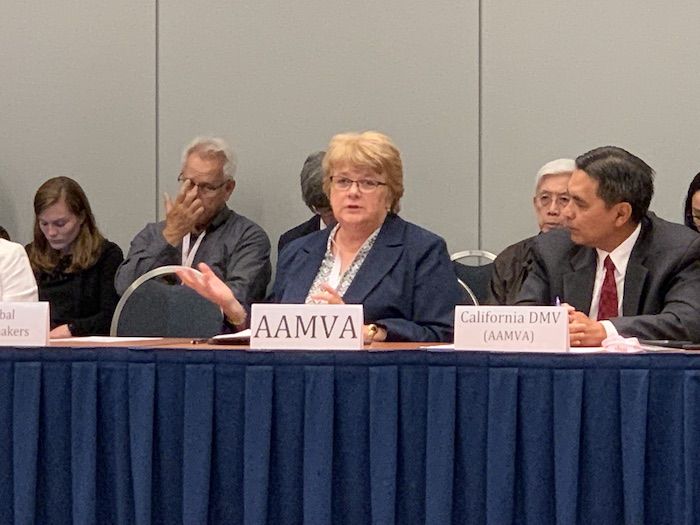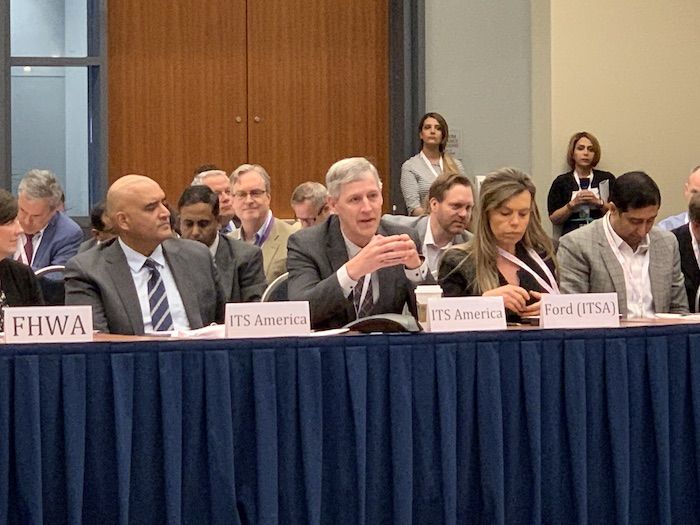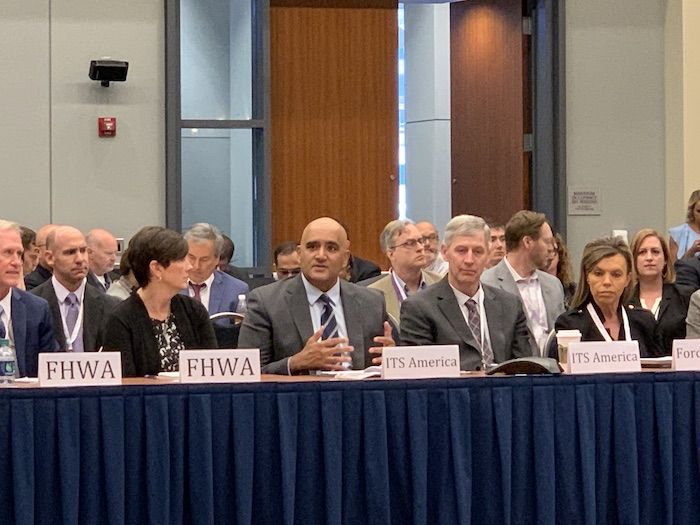At the ITS America Annual Meeting, taking place in Washington DC from June 4-7, key leaders and members from US organizations gathered to discuss how roadways can be readied for automation.
Insights and knowledge were shared from several bodies and organizations, including ITS America, the US Department of Transportation’s Federal Highway Administration (FWHA), the Institute of Transportation Engineers, the American Association of State Highway and Transportation Officials (AASHTO), the American Association of Motor Vehicle Administrators (AAMVA), the Cooperative Automated Transportation Coalition, the International Bridge, Tunnel and Turnpike Association (IBTTA).
“We’re moving the ball down the field in terms of technology, specifically in automation,” said Shailen Bhatt, president of ITS America. “The tech is cool, but that’s not why we’re here. We’re doing this because we’re losing way too many people on American roadways, we’re spending way too much time sitting in traffic and we’re having too big of a negative impact on the environment.”
Brandye Hendrickson, deputy administrator at the USDOT FWHA said, “It’s an exciting time for us. We are playing a significant role in ensuring that autonomous vehicles are safely and effectively integrated into the existing transportation system alongside human-driven vehicles, pedestrians, cyclists and motorcyclists.”
“Our approach is tech-neutral: not commuter control, not top-down and we don’t pick winners or losers. Consumers and users will ultimately decide the technologies that suit them best.”
Jeffrey Lindley, associate executive director and chief technical officer, at ITE, said, “In terms of readiness, there are aspects of this that we don’t want to talk about because we don’t know what it looks like. But organizational readiness means having a basic level of knowledge for what’s happening and what’s going to happen. It’s being ready to play, in terms of testing and deployment. It’s thinking about what data needs to be collected, made available and protected. Our objective is to make sure that our 15,000+ members know what they need to know, to have a basic level of knowledge about what the state of play is and where this is going. What they should be worrying about and who they should be talking to.”
Blaine Leonard, technology and innovation engineer, Utah Department of Transportation and co-chair of the AASHTO Connected and Automated Vehicles Committee, commented: “One of the biggest risks is trust. If we’ve got technology that can save lives, but users won’t get in these vehicles because they don’t trust them, then we have a problem. We have to educate the public and re-introduce the tech to the public so that they are better informed.” Cathie Curtis (above), director of vehicle programs at the American Association of Motor Vehicle Administrators (AAMVA), commented that the attention should be on existing technologies. “We need to focus on technology that can already be found in cars,” she said, “such as advanced driver assistance systems (ADAS). Consumers are confused about these technologies. As a result, AAMVA is developing guidance about these systems for states, regarding how to test and use them.”
Cathie Curtis (above), director of vehicle programs at the American Association of Motor Vehicle Administrators (AAMVA), commented that the attention should be on existing technologies. “We need to focus on technology that can already be found in cars,” she said, “such as advanced driver assistance systems (ADAS). Consumers are confused about these technologies. As a result, AAMVA is developing guidance about these systems for states, regarding how to test and use them.”
Bhatt considered the implications of roadway readiness for automation, when it has eventually been achieved. “As we collaborate and become more connected in our pursuit of automated deployment, cybersecurity needs to be at the forefront,” he said.
Drawing attention from the future, to the present, Malcolm Dougherty (below), a member of the ITS America board, and senior vice president and national practice lead at Michael Baker International, said: “We’ve touched upon the outcome [of readiness]. Now, we need to focus on the transition. We need to put steps in place to reduce the potential messiness of this period. We also need to work out how we can advance the technology and realize the benefits, while avoiding unintended consequences.”





